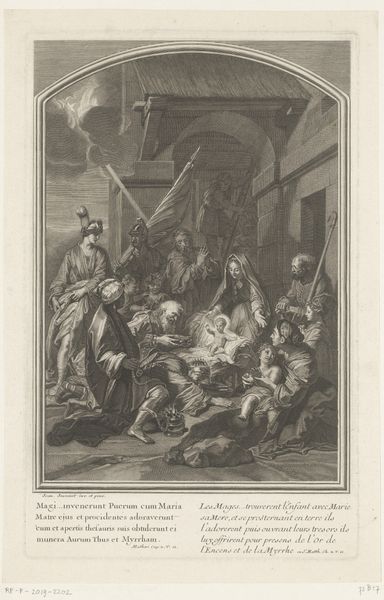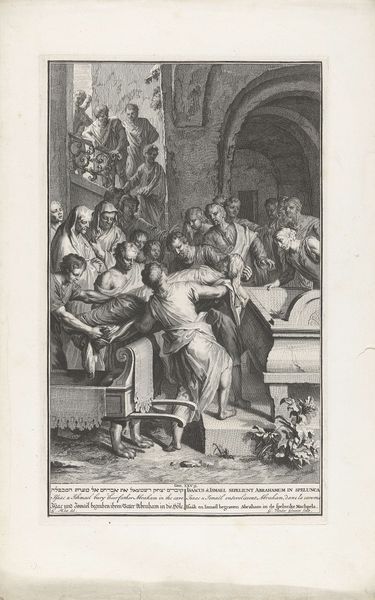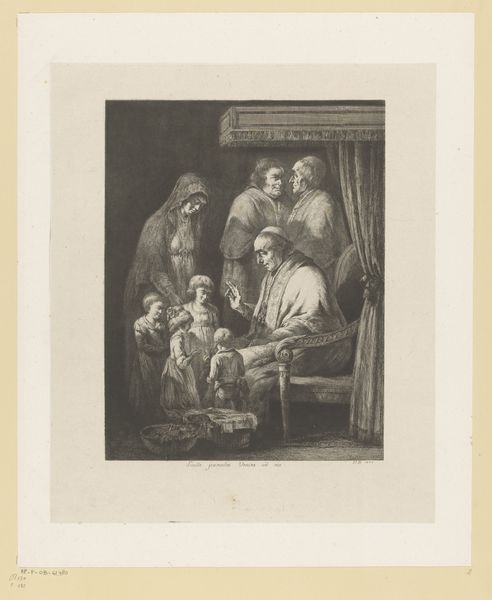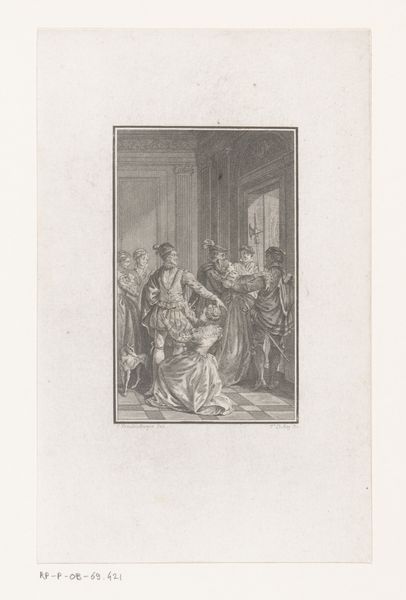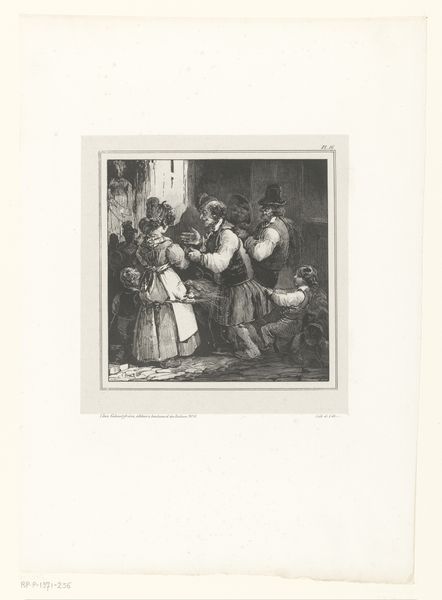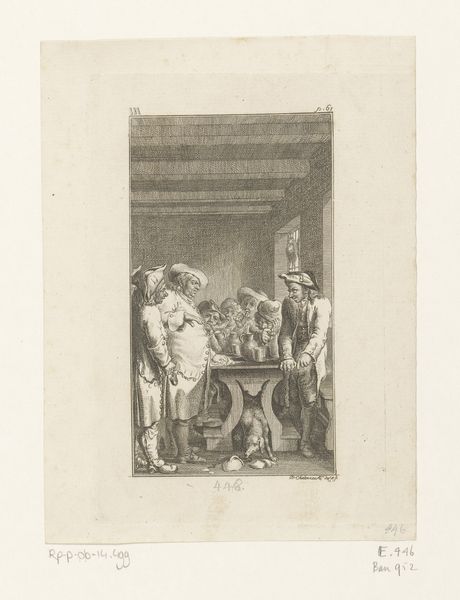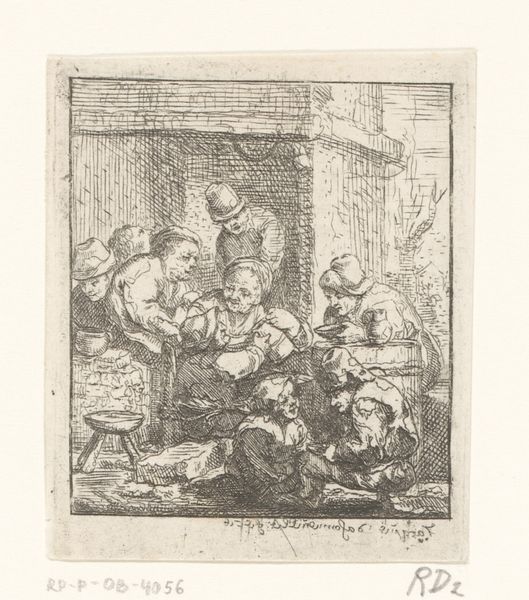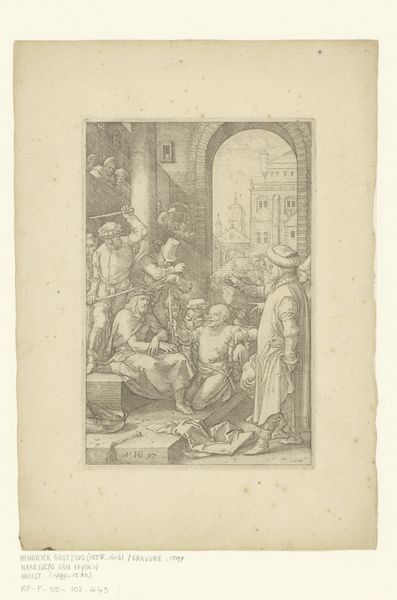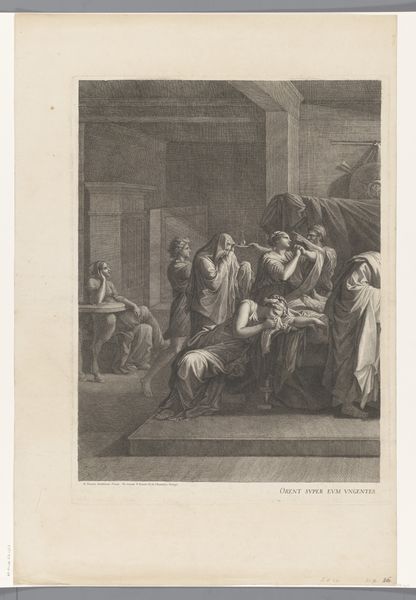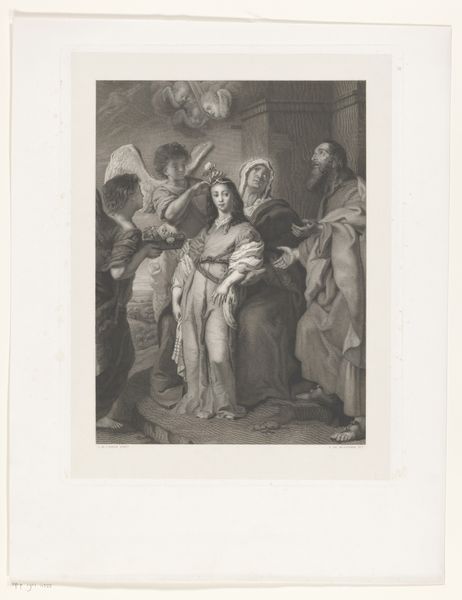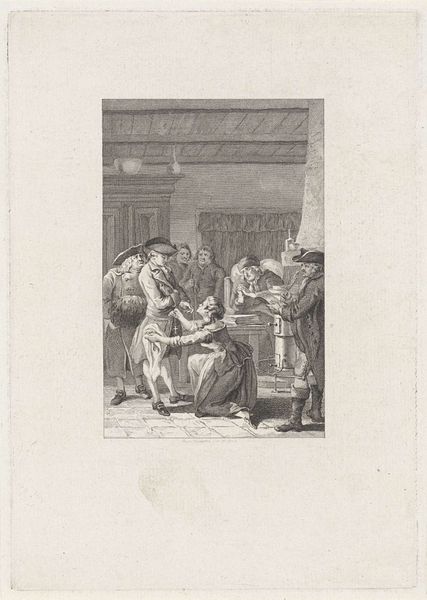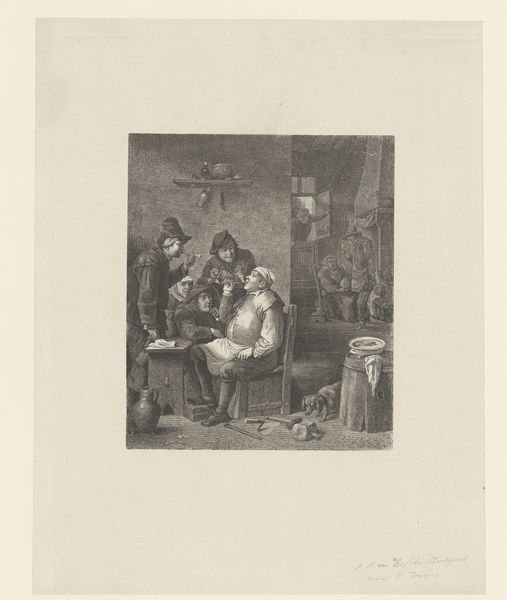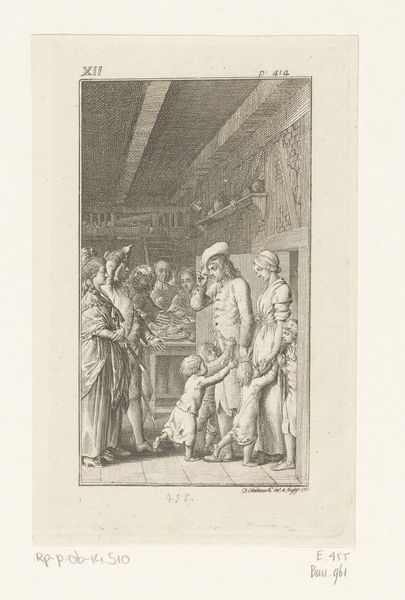
Jean Calas spreekt voor de laatste keer tot zijn kinderen 1780
0:00
0:00
Dimensions: height 148 mm, width 94 mm
Copyright: Rijks Museum: Open Domain
Curator: Standing before us is Daniel Nikolaus Chodowiecki’s 1780 engraving, “Jean Calas spreekt voor de laatste keer tot zijn kinderen.” It is currently held at the Rijksmuseum. Editor: The weight of despair practically radiates from this image. The claustrophobic composition and oppressive atmosphere, rendered through precise engraving, feel incredibly heavy. Curator: Indeed. Chodowiecki masterfully employs line and shadow to create a scene brimming with pathos. Note the intricate details, especially the textures—the rough stonework contrasting sharply with the delicate rendering of the figures' garments. This interplay intensifies the emotional impact. Editor: Looking closely at the technique, the lines feel so precise yet delicate. One wonders about the engraver's tools: the burin, the metal plate, the pressure required to achieve this tonal range. Each mark made in service of illustrating social and political events of that period. Curator: Precisely. It depicts the final moments of Jean Calas, a Protestant merchant wrongfully convicted and executed for the murder of his son. Chodowiecki used the language of Baroque dramatic presentation in his history paintings, and the work itself functions as a powerful indictment of religious intolerance. Editor: The visual weight is undeniably heavy with moral outrage. From a materialist standpoint, we might consider the economic implications. Printmaking was itself part of Enlightenment social critique because of the widespread dissemination of its imagery—challenging the establishment's control of the press and contributing to an ever increasing culture of accessible visual communication. Curator: This engraving goes far beyond mere documentation, serving as a testament to the artist's ability to transform a tragic event into a powerful symbolic language of injustice, through mastery of form, light, and narrative. Editor: Absolutely. By carefully considering the print medium and its position within social discourse of the late 1700s, we recognize it is an object born of contentious sociopolitical processes, where new publics emerged for artwork as information. A single artwork—a print no less—encapsulating grief, injustice, but most significantly the seed for radical socio-political shifts.
Comments
No comments
Be the first to comment and join the conversation on the ultimate creative platform.
